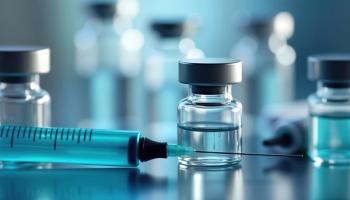
Implications of Multiple Switching with Biologic Therapies
Study-based findings provide support for considerable implications of multiple switching between biosimilar and originator products.
Episodes in this series

Kareem Karara, PharmD, BCPS, CCHP: The 2019 study by Bruno Emond and colleagues showed that patients who switched from originator to biosimilar infliximab were 3½ times more likely to switch to another originator biologic or to discontinue the index treatment than those who stayed on the originator biologic. Patients who switched from the originator to the biosimilar drug were more likely to change therapy than those who had their therapy left alone. There have been other studies prior to and following this 2019 study that have established this phenomenon.
In addition to the study provided, there have been others. This is an increasingly well-documented line of inquiry. Many of these studies evaluate patients switching from the innovator product to a biosimilar. Those patients being more likely to discontinue treatment or switch to another innovator biologic is well documented, but the reasons for discontinuation and switching are unknown. Physician and patient resistance to switching biologics constitutes one of the major barriers to their adoption—specifically biosimilar adoption—despite the cost savings that can be achieved by using biosimilar therapies. Physician and patient resistance can occur even if there’s evidence that switching is safe. For example, the NOR-SWITCH trial in 2018, which involved switching infliximab biosimilars among patients with inflammatory bowel disease, showed no increase in disease activity.
One area I’m looking forward to monitoring is the impact of pharmacist involvement of biosimilar switching. There was a presentation at the 2022 ASHP meeting that suggested that pharmacists can have a meaningful impact on ensuring patients stay on 1 formulation of their biologic, whether it’s a biosimilar or the originator product. The authors suggest that pharmacist integration into these clinic spaces will be an important cost-savings tool in growing provider comfort with biosimilars.
Improving access and availability of biologics, including the unbranded biologics, offers the promise of improving the quality of care for patients. This is because biologics are the most expensive prescription drugs in the United States. That poses significant barriers to patient access to what are increasingly becoming necessary treatments. The original policy goal of the biosimilars’ approval pathway was to lower health care costs for these products and improve access. However, among the biosimilars that have entered the market to this point, overall market penetration has been limited. Given their low utilization, they haven’t achieved the original goal that policymakers intended of increasing competition and reducing prices. Unbranded biologics offer another pathway to introduce low-cost biologics into the marketplace, with the ultimate goal of improving access for patients.
Transcript edited for clarity.
Newsletter
Get the latest industry news, event updates, and more from Managed healthcare Executive.



















































